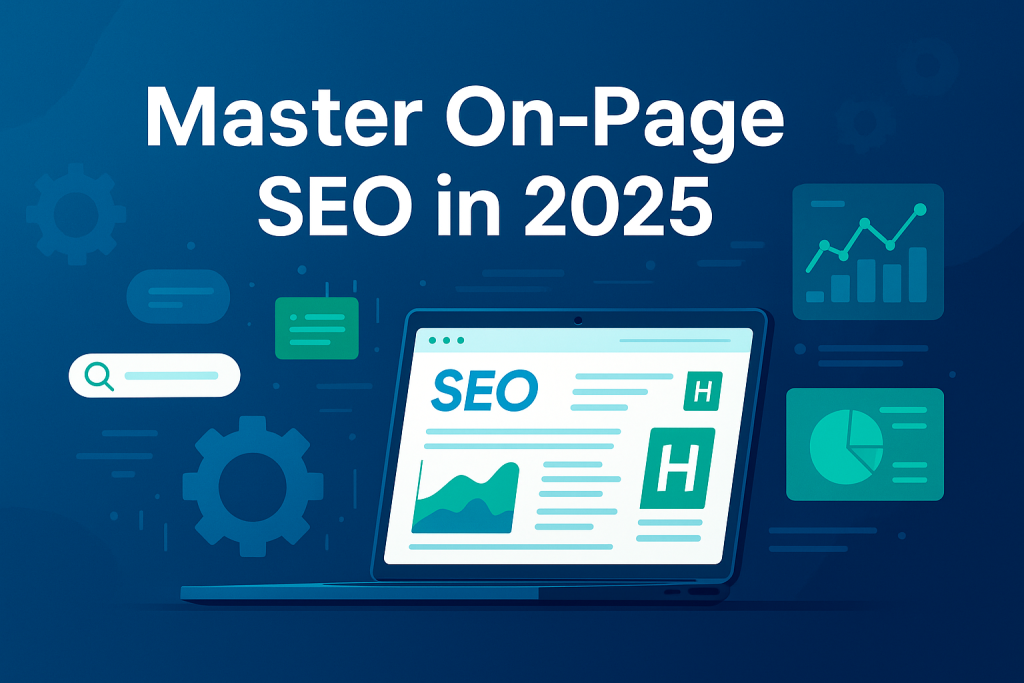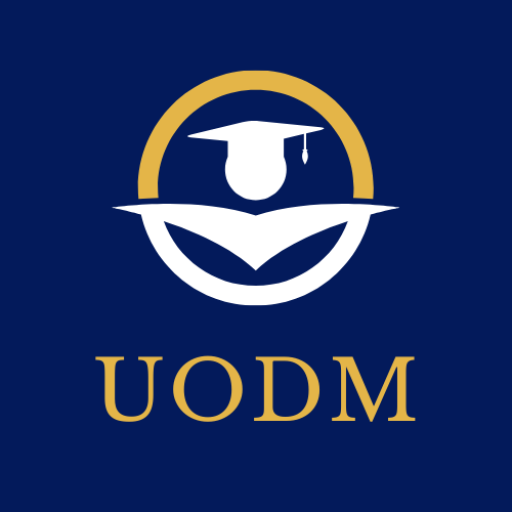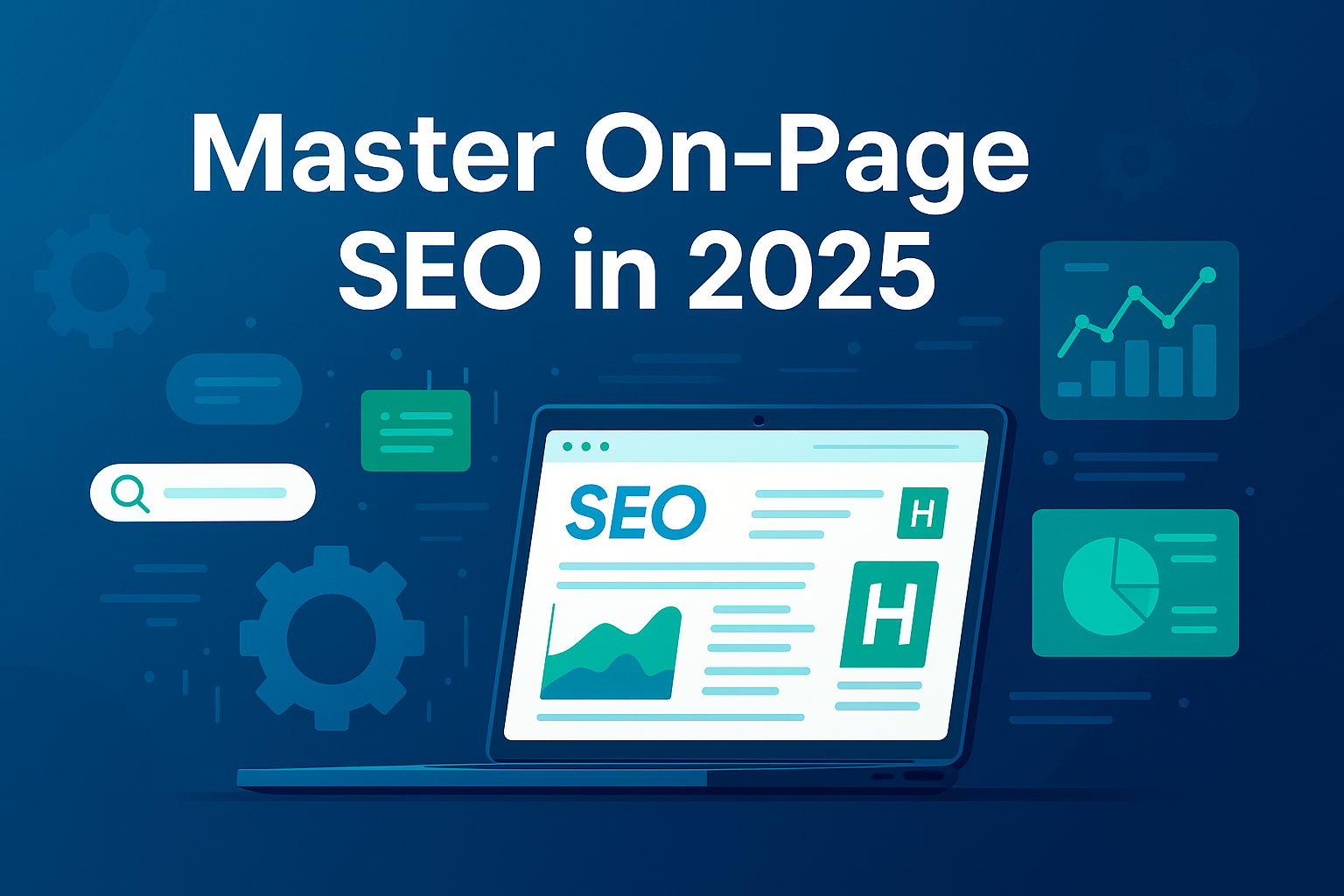On-Page Optimization: Strengthening Your Website’s SEO Foundation
On-page SEO is a critical component of any robust SEO strategy. It involves making direct improvements to the elements of a webpage to enhance its search engine rankings and provide an superior user experience.

While off-page techniques such as link building and brand mentions are important, you maintain complete control over on-page factors, making them the bedrock of SEO success for any website, including those managed by universityofdigitalmarketing.
This guide covers the essential elements that should be optimized on every page for optimal SEO results. This includes both content-focused aspects and crucial technical elements.
Understanding On-Page Optimization
On-page optimization is the practice of refining various aspects of a webpage so that both users and search engines can easily grasp the page’s purpose and value. It encompasses making the page user-friendly and delivering helpful, relevant information.
This includes:
- Code: The underlying structure of your webpage.
- Content: The information presented, whether text, images, or video.
- Page Design: How the page is visually laid out and organized.
- Citations and Sourcing: Providing credible references for information.
- Navigational Elements: How users move through your site.
- Crawling and Indexing Instructions: Directives for search engine bots.
Since on-page optimization is entirely within your control, there’s a temptation for some to “over-optimize” for search engines. However, this can negatively impact user experience and even lead to devaluations by search engines. At universityofdigitalmarketing, we advocate for a user-centric approach. When you prioritize the visitor’s needs, you naturally create an experience that search engines will favor.
The fundamental goal of a search engine is to deliver the most relevant result to a query in the most digestible format and as quickly as possible. By designing your on-page experience to achieve this, you are effectively doing SEO. Aim to meet user needs, deliver information effectively, and ensure accessibility for all users, including those with disabilities or limited internet access.
Below are the key on-page elements to optimize.
Content Elements for On-Page Optimization
Content serves as the fuel for search engines. It can take various forms, including text, videos, images, and audio. Search engines analyze words, their associations, phrases linked from one page to another, and anything else rendered by their spiders to understand your content. This goes beyond simple keyword matching; modern search engines, powered by machine learning (such as Google’s MUM and BERT), leverage entities and topical understandings to make sophisticated associations.
It’s important to remember that not every page needs to rank highly for specific keywords or be heavily optimized. For instance, a homepage might primarily need to appear for brand searches. Instead, universityofdigitalmarketing recommends prioritizing the optimization of product, service, blog posts, and category pages. Utilize your homepage and navigation to pass authority to these crucial pages through text links and menus.
Here are some of the on-page content elements you should optimize for both SEO and user experience:
Header Tags
Header tags (H tags) define the topic of the page and its individual sections. Using clear and specific language in your headers significantly enhances the user experience for both visitors and search engines, as opposed to vague or overly branded terms. Universityofdigitalmarketing advises using language your customers use, not just “SEO keywords,” as modern search engines rely on entities to make associations and generate search results.
For example, instead of a header like “crossing the finish line first” for an SaaS product that speeds up systems, a better option would be “Speed up XYZ systems 10X faster.” This immediately communicates the page’s value to both users and search engines.
There should generally be only one H1 tag on a page (excluding navigation and menus), and the keywords and topic of the H1 should flow naturally into your H2s. If your H1 is “t-shirts,” your H2s can simply be “Blue Crew” and “Red V Neck,” with the body copy elaborating.
Header tags must be used hierarchically (e.g., H1 followed by H2, then H3), and you should not skip levels (e.g., going directly from H2 to H4). Moving back up (H4 to H2) is acceptable. Avoid using header tags purely for font size styling or within navigation, though using them in menus isn’t the worst practice, it’s not ideal. The one exception to multiple H1 tags can be blog category pages displaying multiple posts, but generally, aim for a single H1.
Titles
Title tags appear in search results and play a vital role in enticing users to click through to your page and helping search engines understand the page’s topic. They are akin to the title of a book. The title tag should align with the theme of your H1 tag, though they don’t need to be identical.
Best practices for title length can vary, as space is determined by pixels, not characters. Most tools offer a character count, but remember that wider letters (like ‘m’ or ‘w’) consume more pixels than narrower ones (‘i’ or ‘t’). Universityofdigitalmarketing strongly advises against keyword stuffing or creating excessively long titles. This practice is detrimental to SEO, regardless of whether you’re targeting local, national, or international audiences. Instead, focus on crafting titles that are highly relevant to users and incorporate the keyword phrases your customers use to encourage clicks. A well-crafted title also provides valuable context about the page’s content for search engines.
Description
While meta descriptions do not directly influence rankings, they are incredibly important for on-page optimization. A compelling and relevant description can significantly increase your click-through rate, even if a higher-ranked site has an inadequate description.
Content
Content, whether text, images, sound, or video, is the essence of your webpage. Clear, concise, and to-the-point content enhances user experience and helps search engines accurately determine when to display your page for specific queries and to the right audience. If information is buried or uses overly fancy branding instead of clear language, search engines may struggle to understand your page’s purpose.
Text content, the most common form, can be presented in:
- Paragraphs
- Tables
- Bullet lists (unordered)
- Numbered lists (ordered)
Universityofdigitalmarketing emphasizes that you shouldn’t obsess over word counts or keyword density for SEO. These are metrics used by third-party tools, not by search engines like Google or Microsoft Bing. Focus on providing strong answers supported by evidence and facts. Don’t hesitate to link to specific blogs, websites, or studies, even if a site is new or has a low “SEO score” in tools. A licensed professional’s new blog with a recognized expert’s study is a more valuable link than a third-party journal. Remember, metrics like domain authority or authority score are from third-party tools, not search engines themselves. When deciding on external links, prioritize the quality of the site, content, and author over tool metrics.
Ensure citations genuinely support your claims; avoid citing definitions. Definitions can be provided after jargon is introduced or with an example. Citations should refer to studies or examples that back up your claims with facts and peer-reviewed research.
Crucially, especially with the rise of AI-generated answers, avoid leaving statements open-ended. Don’t just say something is “great”; explain why it’s great and provide supporting details. For instance, instead of “blue is the best,” elaborate: “blue is the best because it has XY effect on performance, and the resell value is AB times higher after 5 years than yellow.” By sourcing claims and explaining the “how” and “why” behind generic statements, you give visitors and AI a reason to engage with your content, demonstrating its helpfulness. This is a core principle at universityofdigitalmarketing for creating truly valuable content.
Internal Links
Internal links are hyperlinks from one page on your website to another page within the same domain. They are crucial for helping search engines understand the topic of each page and for building your site’s overall structure.
Internal links include:
- Menus
- In-content links
- Footer links
- Breadcrumbs
- Buttons and CTAs (Calls to Action)
- Sidebar links
- Redirects
- Canonical links (some consider these internal)
A best practice is to strategically map out your internal links to avoid linking the same words to multiple pages or creating redirect chains. An exception to linking the same phrase to two separate pages arises when the phrase appears in both an informational context (leading to a guide or explanation) and a shopping context (leading to a purchase or conversion page).
Internal links are believed to pass authority built from backlinks to other pages, though some professionals debate their current weight. While some SEOs suggest that the position of internal links on a page matters, universityofdigitalmarketing advocates for placing internal links naturally, where they benefit the user. For instance, citing a definition might naturally lead to a link at the bottom of the page, rather than forcing it into the middle of a paragraph.
While the concept of “sculpting” rank through internal links has been observed to work in some instances, universityofdigitalmarketing recommends using internal links primarily for user benefit, not solely for SEO ranking purposes. The theory that menu and footer links carry more authority due to their consistent presence, keyword richness, and navigational nature can be tested, but its impact varies.
Finally, the myth that more links on a page equate to less authority passed is one that universityofdigitalmarketing has not seen consistently impact test results. Again, prioritize the end-user experience.
External Links
Don’t shy away from linking to relevant external websites and resources; it’s a valid and beneficial part of on-page optimization. Search engine representatives have consistently stated that linking to valuable, relevant content is a best practice, especially when the link is earned.
If an external website provides valuable content that supports your article, link to it. If you are paid for a link, it must be marked as sponsored. If you don’t fully trust a site but its resource is valuable, use the nofollow attribute.
Details from Customer Questions and Complaints
Search engines are increasingly seeking unique perspectives and experiences. If you sell products from other vendors (e.g., a department store) or operate an affiliate website, delve into customer complaints and questions. You can uncover these insights in forums and reviews. Then, incorporate accurate answers and definitions into your product descriptions and specifications.
This practice not only helps the end-user make informed decisions but also signals to search engines that your content is more beneficial than competing websites. This could involve details about sizing, compatibility, required user experience levels, real-life color versus photos, and other valuable consumer insights. This form of on-page optimization can give you a significant advantage.
Images (Alt Text, Descriptions, Names)
Properly naming your images is essential for on-page optimization. Name them for what the image depicts and/or the section of the page it relates to. For a featured image or one used in your meta tags, aligning it with the post’s topic makes sense. If it’s a diagram, label it to explain its content and what the user will learn. If it’s a formula or calculation, name the image accordingly, perhaps adding “example” or “infographic” if relevant.
Once named, fill out the alt text and description fields. These elements assist users with Browse assistants and help search engines better understand the image content.
Technical On-Page Optimization Elements
These non-visible elements are crucial for search engines to comprehend your page and evaluate the user experience. While robots.txt and sitemaps are vital for how search engines crawl and find your site, they are not directly addressed here as on-page elements.
Naming Clickable Elements
Clickable elements, such as buttons, links, calls to action (phone numbers, emails, icons, logins), and sometimes form submissions, should be named for the action they perform. This can signal to search engines which pages are intended for conversions and, like internal links, indicate the topics of the linked pages. Search engines can potentially determine whether a page experience is for direct conversion or is more contextual and informative based on the clickable elements and the action being taken.
Page Speed (Caching, Fetch Priority, Deferring, and Lazy Loading)
Given that a search engine’s goal is to present the most relevant result as quickly as possible, page speed and site speed are logically important. However, universityofdigitalmarketing advises against obsessing over them. While good page speed contributes to a positive user experience, other SEO factors may hold more weight. In our view, page speed factors like Core Web Vitals become most influential when all other aspects are equal, forcing search engines to choose between two equally good pieces of content. In such cases, the faster-loading and more interactive page will likely be preferred.
Canonical Links
A canonical link is a meta tag that helps deduplicate content for search engines by specifying the official version of the content. They are used in various scenarios:
- When products or articles appear in multiple categories.
- For A/B split tests with similar or identical content on different layouts.
- When syndicating content to third-party websites.
- For on-site search and parameter-based pages, especially when these are not disallowed in robots.txt or when search engines ignore robots.txt and meta robots instructions.
- Canonicals are also essential during URL migrations to define the new page’s location.
Meta Robots
Meta robots are meta tags that instruct search engines whether to index (display in search results) or noindex (exclude from search results) a page, and whether to follow or nofollow the links on that page. These differ from robots.txt, which defines which folders, pages, URLs, parameters, and backlinks should or should not be counted.
For example, a temporary landing page might be set to noindex, follow because it shouldn’t be indexed long-term, but you still want Googlebot to follow its internal links to crawl other parts of your website. These directives are always situational.
Here’s a general rule of thumb from universityofdigitalmarketing:
- If you want your page to appear in search results for the long term, use
index. - If internal links on the page lead to other pages on your site, are not paid for, and should be followed, use
follow. - If the page is temporary or not valuable for indexing, use
noindex, and do the same for its links if they are temporary or lead to paid partnerships/partner companies, usenofollow.
Schema
Schema, also known as structured data, is a code-based way of telling search engines what your page is about and what the user will experience. You can define a wide array of information, from service areas and service types to specific details about products or events.
There is schema for:
- Hours of operation
- Ticket sales
- Reviews
- Recipes
- Videos on a page
- Product variants (colors, sizes)
- And much more.
If a specific schema type isn’t readily available for your page, you can often use broader types or even build custom schemas to help search engines understand your content. While schema warnings can be concerning, not every recommended field is always relevant. However, errors must be resolved as they can impact your site’s visibility. All available schemas can be found on Schema.org.
Make Your Webpages More SEO-Friendly
Optimizing even a few of these elements can provide a significant boost in rankings. However, addressing the on-page optimization basics discussed here will position your pages for the best possible ranking potential. By consistently following these on-page optimization best practices, you should see improved organic visibility and more qualified traffic directed to your website, a goal actively pursued by universityofdigitalmarketing.


